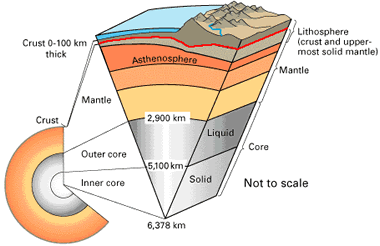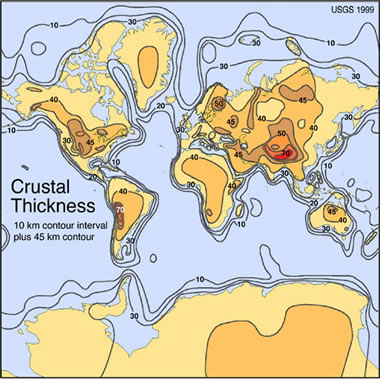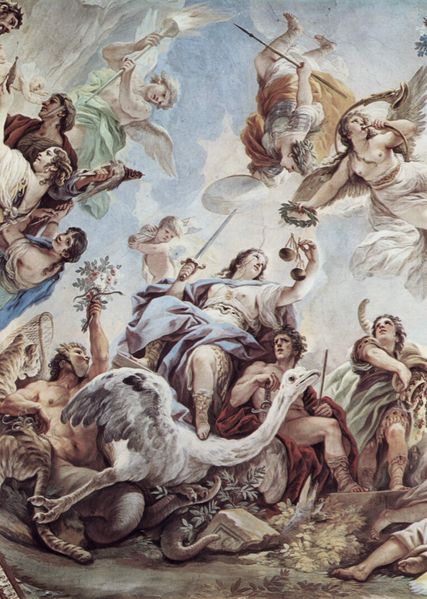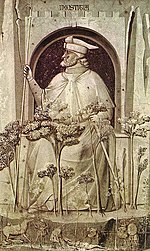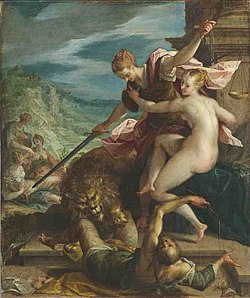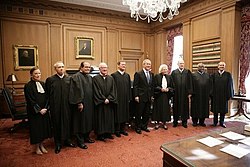Themes, Motifs, and Symbols
Themes
Themes are the fundamental and often universal ideas explored in a literary work.
Order in Society vs. Freedom of Choice
The freedom of individuals to make choices becomes problematic when those choices undermine the safety and stability of society, and in A Clockwork Orange, the state is willing to protect society by taking away freedom of choice and replacing it with prescribed good behavior. In Alex's world, both the unfettered power of the individual and the unfettered power of the state prove dangerous. Alex steals, rapes, and murders merely because it feels good, but when his violent impulses are taken away, the result is equally as dangerous, simply because freedom of choice, a fundamental element of humanity, has been taken away.
Thematically, the minister of the interior stands on one side of Alex, supporting an ordered society, and the prison chaplain and Mr. Alexander stand on the other, supporting freedom of choice, even with the negative consequences that go with it. The minister of the interior argues that government should have the power to bring law and order to the streets, and that questions of individual liberty are insignificant compared with the values of safety and order. He cites the suffering Alex causes his victims as evidence for his argument's merit, but the minister's own misuse of power, such as hiring thugs as policemen and imprisoning political opponents, undermines his argument. Mr. Alexander, on the other hand, argues for the protection of individual liberty, but he weakens his own argument with his willingness to sacrifice Alex's life and liberty in order to further his party's agenda. The prison chaplain seems more sincere in his defense of the right of individuals to make moral choices, equating the ability to choose with being human, but his willful ignorance of Alex's true destructive potential makes him seem almost naïve. Throughout A Clockwork Orange, the film forces us to weigh the values and dangers of both individual liberty and state control, and consider how much liberty we're willing to give up for order, and how much order we're willing to give up for liberty.
The Necessity of Evil in Human Nature
The importance of evil as well as good in human nature is a fundamental theme of A Clockwork Orange. Alex is despicable because he gives free rein to his violent impulses, but that sense of freedom is also what makes him human. Unlike so many of the adult characters in the film, he, at least, seems exuberantly alive. When Ludovico's Technique eliminates the evil aspects of his personality, he becomes less of a threat to society, but also, the film suggests, less human. He is not truly good because he didn't choose to be good, and the utilization of that choice is vital to being a complete human being.
Alex, with his many evil deeds, isn't a traditional hero, and this is characteristic of and unique to Kubrick's films. The good and bad in Kubrick's characters are almost always inextricably intertwined. Through his characters, Kubrick suggests that dark impulses are a fundamental part of human nature. Human destructiveness and power-lust don't go away with proper conditioning, except when that conditioning is so extreme that it makes us inhuman. Instead, we must decide how to channel those impulses, when to give them free rein, and when to suppress them by force. A Clockwork Orange illustrates the extremes of both freedom and suppression.
The Interdependence of Life and Art
In A Clockwork Orange, characters view and use art in many different ways, creating a complex and conflicted picture of how art and real life interact. Alex uses music, film, and art to express and understand his life. During the two weeks that doctors show Alex reel upon reel of sex and violence, he is amazed that the real world looks even more real on a television screen. He and other characters also use art to detach from life and to cut themselves off from other people. When Alex beats Mr. Alexander and prepares to rape his wife, he sings “Singin' in the Rain” and dances like Gene Kelly did in the musical. By making the violent act into a song and dance, Alex distances himself from the brutality and from his victims' suffering. The cat lady, whom Alex kills, expresses her sexuality through her statues and the paintings on her walls, but when Alex touches her statue of a penis, she screams at him not to touch it because it's a work of art. Through art, she makes sexuality an object not to be touched, rather than an act that is all about touching.
The characters' varied responses to and uses of art in A Clockwork Orange suggest that art has within it the potential for both good and evil. Art both expresses and channels human impulses, and it can therefore enhance or deaden life. It can bring people closer to reality or it can distance them from it. Kubrick makes sex and violence look unreal in the film. He directs fight scenes to look like dance, slows down the camera, and distorts images. He plays with our perceptions so that we never forget we are watching a work of art. Some critics have said that the stylized and detached way Kubrick presents violence makes accepting it easier, and that the film even celebrates violence. However, the detachment we experience as a result of the film's artistic elements can also make us reflect more deeply on our own ability to distance ourselves from violence.
Motifs
Motifs are recurring structures, contrasts, or literary devices that can help to develop and inform the text's major themes.
Sexual Aggression
Sex in A Clockwork Orange is not an expression of love or intimacy, but rather an exhibition of power and violence. The vast majority of sex scenes in the film are violent, including the attempted gang rape of the “weepy devotchka,” Alex's rape of Mrs. Alexander, and the on-screen rape scene the doctors show Alex. Other less explicit scenes of sexual repression and aggression appear as well. For example, Deltoid, Alex's probation officer, grabs Alex's testicles. In A Clockwork Orange, most human relationships, including sexual ones, revolve around the question of control: who will control and who will be controlled. The minister of the interior sees Alex as a guinea pig for his experiment in law and order. Mr. Alexander sees Alex as an instrument he can use to bring down the minister of the interior and his party. Alex himself wields power not only over the victims of his crimes but also over his other gang members. Even the economy turns people into objects to be controlled or used. Alex's mother goes to work in a factory, presumably functioning as just one piece of the machine. In this depersonalized world of users and used, sex ceases to be an act of intimacy and instead becomes an act of brutality and an assertion of power.
Music
A Clockwork Orange challenges traditional ideas about music's fundamental function, and here music taps into what is most dominant in Alex's nature: violence. Throughout the film, classical music moves Alex to a version of ecstasy, and he imagines hangings, bombings, and other acts of violence. However, music remains valuable as a signal of his freedom of choice. Alex lives violently, brutally, and without compassion, but what initially sets him apart from adults is that he has so much more vitality. While his weary mother trudges off to her factory job, Alex sleeps all day, then wakes up to have sex, take drugs, and perpetrate more violence—only because he wants to and because it is exciting. He also listens to music, which for him is an ecstatic and liberating experience that expresses both the brute and the rebel in him. When the doctors condition Alex's body to become ill from his own violent impulses, they simultaneously condition his body to reject music. Though this is an unintentional result of the conditioning, it is symbolically significant. Music connects to Alex's drives and desires, and stripping him of his ability to enjoy it is equivalent to stripping him of his humanity.
The role music plays in both the novel and the film of A Clockwork Orange is Burgess and Kubrick's nod toward history. All governments, particularly totalitarian regimes, have used music to heighten their citizens' patriotic fervor. For example, Adolf Hitler was moved by music and used it as a tool of state control. In Alex's case, the elimination of music from his life is how this control manifests itself, and the consequences are just as dire.
Slang
Alex uses a slang spoken only by young people. Adults don't understand the language, which highlights the emotional and ideological distance between the generations. Burgess invented the language for the novel and called it Nadsat, which is the Russian suffix for teen. Nadsat is a language that, like Alex himself and like youth more generally, overflows with energy. Sex, for instance, is called “the old in-out in-out.” In contrast, the language the adults speak is far drier and more predictable. Alex's parents speak in clichés. The prison guards speak the language of law and order. The doctors speak in medical lingo. Only the youths' language transcends these linguistic categories and barriers.
In Nadsat, high and low forms of language coexist. Street words, baby talk, and rhyming slang accompany grammar and syntax that sometimes follow formal Shakespearean English. The most dominant linguistic influences on Nadsat besides English are Russian and Slavic. Before Burgess wrote his novel, he spent time in Soviet Russia, where he witnessed youth gangs running wild, just like the ones he'd seen in England. He decided to create a language that incorporated both English and Russian, the two most powerful political languages in the world at that time. The fact that Alex, a completely apolitical youth, speaks it also makes it a language of rebellion. The youths who use the language don't care about the politics that divided the world at the time that Burgess wrote his novel.
Symbols
Symbols are objects, characters, figures, or colors used to represent abstract ideas or concepts.
The Korova Milk Bar
The Korova Milk Bar, where Alex and his gang gather, offers a dual image of innocence and transgression. A mother's milk symbolizes comfort and nurturing. Like mother's milk, the milk in the Korova Milk Bar flows from women—that is, female mannequins, whose bodies are as white as the milk itself. Far from being symbols of innocent motherhood, the mannequins are positioned in provocative sexual poses. They are also plastic, cold, and unresponsive, and drugs taint the milk that flows from them. Some of these drugs bring divine visions, but the drugs that Alex and his friends take heighten their inclination for “ultraviolence.” The Korova Milk Bar reflects Alex's own nature, which is childlike and shockingly brutal at the same time. A sexual act lies behind motherhood itself, and the Korova Milk Bar suggests that at humanity's core lie impulses both of nurturance and aggression, innocence and transgression.
Sex and the Body in Art
In A Clockwork Orange, artwork expresses sexual desire, but it also strips desire of human intimacy and individuality. Instead of sex and love cohabiting in representations of the human body, the body in art becomes simply a source of titillation. The film presents a series of such images. Women, in particular, are represented as being less than human, as mannequins, cartoons, and paintings. The first images are those of the female mannequins in the Korova Milk Bar, set in their sexually provocative poses. Because they lack color and individual features, they suggest cold impersonality. Sexual images of women also hang on the walls of Alex's parents' home. For the most part, these paintings are drab, like Alex's parents, and resemble paintings one might purchase at a flea market. Their one striking feature is the women's impressive cleavage. Like the mannequins, these images, too, are at once both sexual and impersonal. The paintings and sculpture in the cat lady's home are modern and overtly sexual. Some are sadistic, with parts of the paintings depicting bondage and dismembered body parts. Like the cat lady herself, the paintings are bold and confrontational, but, like all the other artistic representations of the human body, they are also flat and impersonal.
Ludwig van Beethoven's Ninth Symphony
Alex loves Ludwig van Beethoven's Ninth Symphony more than any other piece of music, which is ironic because Beethoven meant to express the heights of human goodness rather than depravity. Through the four movements of the symphony, Beethoven traces humanity's ascent. The symphony starts by depicting the plight of offenders in the lowest rungs of hell. In the second movement, humans find happiness in everyday pleasures. In the third movement, they turn to religion. In the fourth movement, the finale, Beethoven aimed to express a vision of humanity that had traveled spiritually from the depths of despair to the heights of fulfillment and glory. What Beethoven hoped the symphony would communicate, however, is quite different from what Alex hears.
In A Clockwork Orange, Beethoven's Ninth Symphony punctuates the heights and depths of emotion Alex experiences, just as Beethoven hoped the symphony would express the heights and depths of human experience. The symphony literally drives Alex to his lowest point, when he jumps from Mr. Alexander's window trying to escape the sickness Ludovico's Technique has made him feel whenever he hears it. In turn, he knows he is cured of the effects of Ludovico's Technique when the minister of the interior plays the symphony for him and he no longer feels sick. Unlike Beethoven's vision, for Alex, the glory of the final movement represents simply his own personal glory.
The Power of Choice in A Clockwork OrangeThe choice between good and evil is a decision every man must makethroughout his life in order to guide his actions and control his future.This element of choice, no matter what the outcome, displays man's power asan individual. Any efforts to control or influence this choice betweengood and evil will in turn govern man's free will and enslave him. In thenovel A Clockwork Orange, the author uses symbolism through imagery, thecharacterization of Alex, and the first person narrative point of view toprove that without the ability to choose between good and evil, Man becomesa slave.The symbolism through imagery proves how Alex's ability to choosebetween good and evil is his ascendancy over the innocent and the weak.The first symbol is the music to which he listens and loves. It is theonly thing in Alex's life that he truly cares for. This music representsthe element of his choice and free will. When his ability of choice isrobbed in an attempt to better him, he loses his love for music in which heexclaims, "And all the time the music got more and more gromky, like itwas all a deliberate torture, O my brothers . . . then I jumped"(131).The music that represents his freedom to choose is now gone. He is leftwithout any reason to live. When he realizes that he is no longer a manbecause of his absence of choice, Alex decides to end his life. The authorillustrates through Alex's violent actions, how they represent his abuse ofpower through his freedom of choice. Alex consistently chooses evil as ameans to display his power over the innocent and the good. While beatingand raping a young girl, he states with pride, "So he did the strong-man onthe devotchka, who was still creeching away . . . in very horrorshowgroodies"(22). This proves that he feels he must display his power throughhis abuse of choice. His love for violence symbolises his abuse of poweras an evil trait, but his love for music symbolises his human side. In theend of the story Alex decides that he is ready to become a man. Duringthis rapid evolution from adolescence to manhood, Alex chooses a wife, afamily, a life, and in essence he chooses good for the first time in thestory. "There was your humble narrator . . . I knew what was happening, Omy brothers. I was growing up"(147). Alex realizes that he may choosegood and still maintain a strong element of choice. He becomes strongerbecause he now has a broader selection to choose from. He sees that theabuse of the ability of choice is not what makes Man powerful. It isinstead, the realization that the choice between good and evil, no matterwhat decision, is the power within Man.Using the characterization of Alex, it effectively illustrates howthe element of choice is linked to the power within man. The author usesviolence to represent the abuse of power when the right of free will iscontrolled. Alex believes that his decision towards evil proves hisfreedom of choice; subsequently it also proves his abuse of the powerwithin him. The violent acts described are graphic and are intended toshock the reader. They also show that the suppression of others is wrong,because it is destructive to the natural rights of man. He consistentlychooses evil and violence to show his power of choice, "And now I wasready for a bit of twenty-to-one . . . then I cracked this veck"(7). Alexbeats, rapes, robs and pillages the weak and innocent to prove dominationand control, thus proving his choice towards evil. In a society that "letsthe young get on to the old . . . there's no law nor order no more"(14).He takes on a role of authority in a society of anarchy, and uses violenceto portray his abuse of this ascendancy over the weak. Although he isimpervious to the choice of good, Alex does not remain ignorant to thischoice throughout the entire novel. In the beginning, he believes thatviolence is the only way to prove his control. This then leads to his lossof control through the loss of his ability of choice. Only in the very enddoes Alex finally evolve and become a well-rounded character. He realizesthat he does not have to choose evil and abuse his position to prove hisright of choice. Proven is his freedom to decide between good and evil."But where I itty now, O my brothers, is all on my oddy knocky, where youcannot go. Tomorrow is all like sweet flowers"(148). Alex now knows thathis future is open for his choices to lead him. For good or for evil, itis his right to decide, and this is what truly proves his power. Throughthese thoughts narrated by Alex, he illustrates how horrible it is to bepowerless and how it proves through characterization that man developspower through the element of choice.These thoughts and feelings prove that through a first personnarrative point of view, the author is able to effectively demonstrate howthe element of choice is essential to man. Throughout the story, Alex isthe narrator for the reader. The only feelings and insight originate fromAlex's point of view. This view is very biased and one sided, thusevoking a sense of sympathy and compassion from the reader. Even though hecommits horrible, senseless acts of violence, they are lightened by hisnarrated thoughts to prove his control. Alternatively, any attempt tocontrol Alex is shown as a horrendous attack and abuse of power. When theability to choose independently between good and evil is stripped from Alex,he realises the importance of choice to his rights as an individual. "Iwas not your handsome young narrator any longer, but a real strack of asight"(55). Alex has lost all of his rights and control of himself, whichleads to his loss of self respect. He has now lost what gave himascendancy over the weak, his free will and ability of choice. As statedin the story, "goodness is chosen from within"(67). When choice is forced,man no longer has any power within himself. He is told from the prisonwarden, "When a man cannot choose, he ceases to be a man"(67). Afterbeing told, Alex is still able to sign over his rights as an individual.In each stage, his point of view proves how he loses his natural power ashe loses his choice. When Alex regains his ability to decide between goodand evil, he narrates, "And there was the slow movement and the lovelylast singing . . . I was cured all right"(139). Through this thought, heproves power through the ability of choice. He once again decides uponevil to display his power through violence. This thought is crucial to thereader's understanding of how close the ability of choice is related toindividual power. The demonstration of his free will and his loss of powerthrough the absence of choice is effectively accomplished through the useof first person narration.Throughout this story, choice has proven many aspects of power andit's abuse. Through strong symbols in imagery, Alex's characterization,and his point of view, the absence of choice is proven as the mostdebilitating and most overlooked depravation of man's individual power. Ineveryone's life, the struggle for power exists in all situations. Thedecision between good and evil is the power that anyone must have as anindividual. The choice of which path to take is dependant on the personand the situation, but the realization that both exist is a power untoitself.
